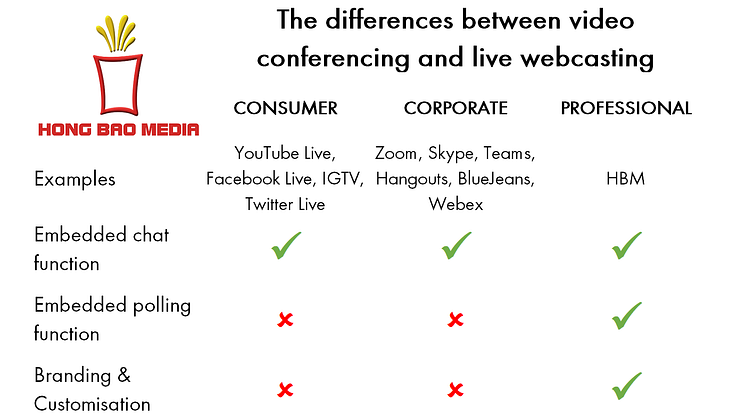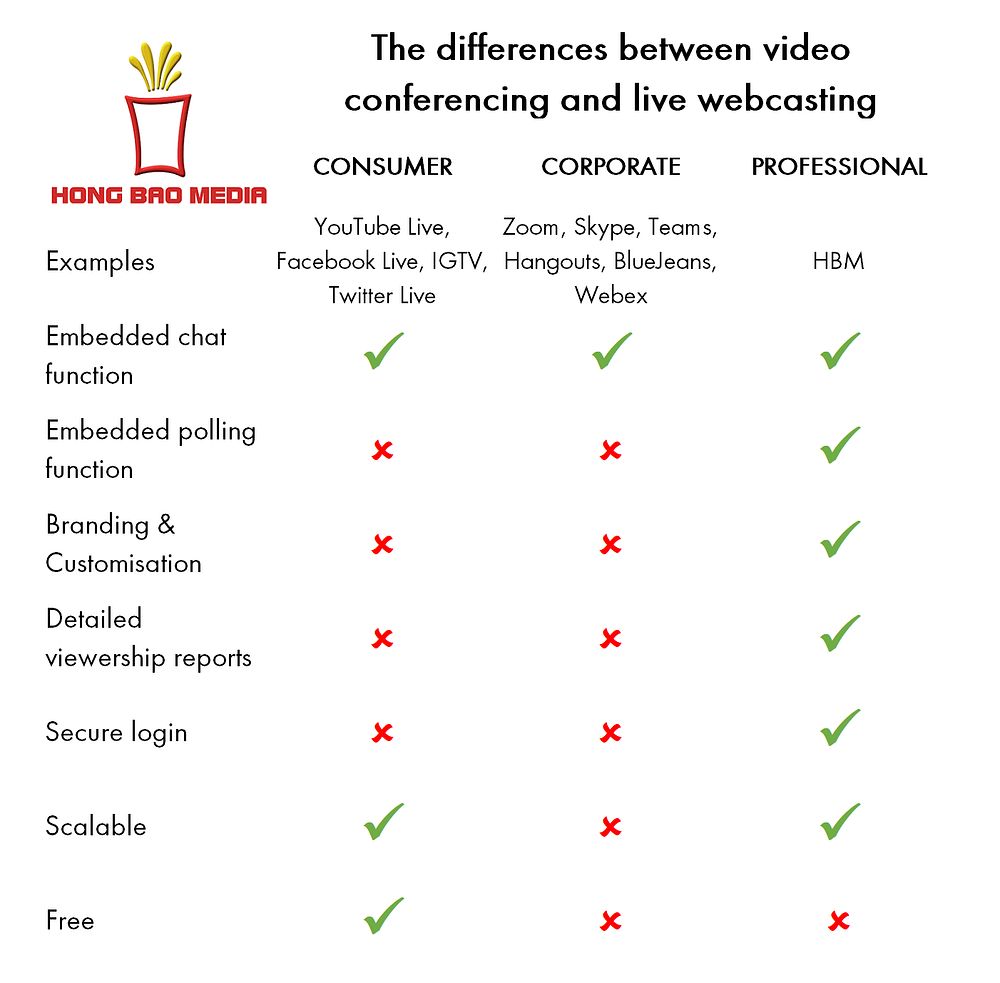
Blog post -
Can you use video conferencing platforms for live webcasting?
We are finding the difference between video conferences and live webcasting is still poorly understood, so if like so many people you’re new to virtual events, here’s a simple way to look at it:
- Video conferencing is like a phone call
- Live webcasting is like television
It’s tantalising to use a video conferencing platform like Zoom, Microsoft Teams, Google Hangouts, BlueJeans, Webex, and so on, and call it a webcast.
After all, it's easy to subscribe for a relatively small monthly commitment, and you don’t need equipment to make it work. Just switch on your webcam and off you go.
But that would be like organising an audio-only conference call and expecting to get a cinematic experience.
Read on below this comparison chart for the six main reasons to consider HBM’s virtual events platform:

- Security – This has become a huge issue of late, as Zoombombing has become a thing. It's where unauthorised participants log in and stream awful videos or pictures. (US church sues after bible study 'Zoombombed' by child abuse). We provide single-signon passwords, so even if legitimately issued passwords are shared by a permitted viewer, others cannot also see the stream, let alone insert malicious content.
- Branding – Virtually everything about the viewer experience can be customised, including the pre-registration page, through to the landing and viewing pages. Your logo can be inserted, and your corporate colours used. The whole look and feel is commensurate with your brand.
- Embedded interactivity tools – Engagement tools such as Q&A and polling can be embedded alongside the video player. Even documents for download can be embedded.
- Viewership data – HBM’s virtual events platform can give marketers and communications directors a very granular view of who logged in and out, and when, and how they interacted with the webcast, along with multiple other statistics of city/country of location, and so on.
- Scale – This is something most people don’t think about because YouTube makes it so easy to stream to a large audience. But there are strict limits when it comes to using corporate tools like Zoom, Teams, and others. Most max out at several hundred participants, possibly more if you pay for a higher plan. But if you really want to reach a large audience these platforms simply cannot offer the scale of HBM’s virtual events platform (maximum streams achieved so far: 220,000 concurrent viewers).
- External cameras - Using a video conferencing platform requires participants to be tech savvy enough to set up their webcams, ensure they can hear and can be heard, and that their face is well lit so we can see them properly. This may sound easy to most, but there are still many people who have trouble with this. By going the webcast route no technical knowledge is required as we manage all the camera work, lighting, audio, etc.
YouTube has created the user expectation that video streaming is free and easy; and it is, if you’re live streaming a birthday party and you don’t care who tunes in.
But most brands do care, so be prepared that live webcasting is not free, and like most things in life you get what you pay for.
